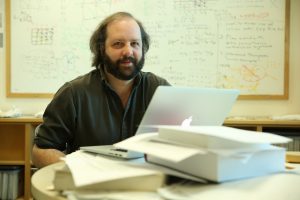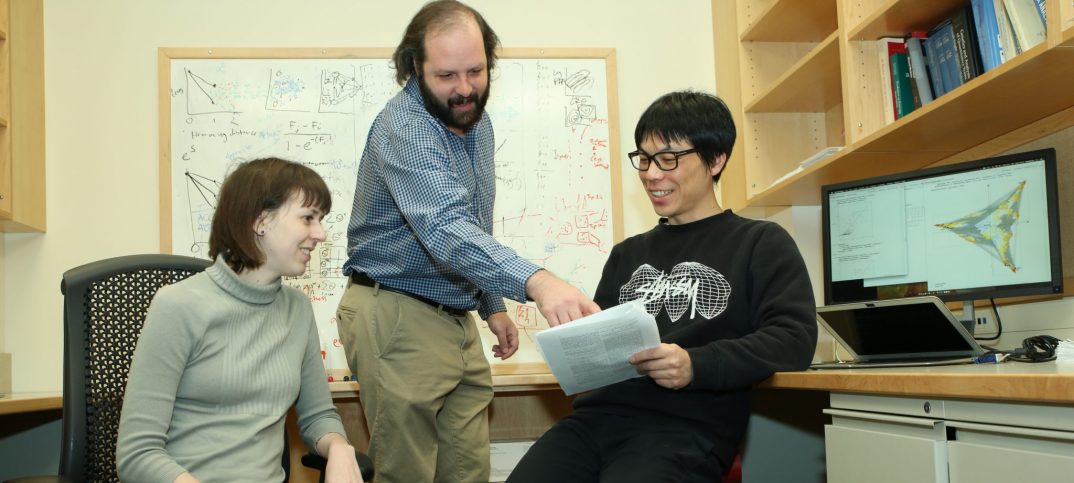By Daniel Dunaief
If cancer were simple, scientists would have solved the riddle and moved on to other challenges.
Often, each type of the disease involves a combination of changes that, taken together, not only lead to the progression of cancer, but also to the potential resistance to specific types of treatment.
Using math, David McCandlish, Assistant Professor at Cold Spring Harbor Laboratory, is studying how the combination of various disruptions to the genome contribute to the development of cancer.
McCandlish recently published a study with colleagues at Cold Spring Harbor Laboratory in the journal Proceedings of the National Academy of Sciences.

The research didn’t explore any single type of cancer, but, rather applied the method looking for patterns across a range of types of cancers. The notion of understanding the way these genetic alterations affect cancer is a “key motivating idea behind this work,” McCandlish said.
So far, the method has identified several candidates that need further work to confirm.
“Cancer would be a lot easier to treat if it was just one gene,” said Justin Kinney, Associate Professor at CSHL and a collaborator on the work. “It’s the combination that makes it so hard to understand.”
Ultimately, this kind of research could lead researchers and, eventually, health care professionals, to search for genetic biomarkers that indicate the likely effect of the cancer on the body. This disease playbook could help doctors anticipate and head off the next moves with various types of treatments.
“This could potentially lead to a more fundamental understanding of what makes cancer progress and that understanding would very likely open up new possibilities in cancer treatments,” Kinney said.
To be sure, at this point, the approach thus far informs basic research, which, in future years, could lead to clinical improvements.
“We are working on this method, which is very general and applicable to many different types of data,” McCandlish said. “Applications to making decisions about patients are really down the road.”
McCandlish described how he is trying to map out the space that cancer evolves in by understanding the shape of that space and integrating that with other information, such as drug susceptibility or survival time.
“We are trying to ask: how do these variables behave in different regions of this space of possibilities?” he said.
McCandlish is making this approach available to scientists in a range of fields, from those scientists interpreting and understanding the effects of mutations on the development of cancer to those researchers pursuing a more basic appreciation of how such changes affect the development and functioning of proteins.
“This is accessible to a wide array of biologists who are interested in genetics and, specifically in genetic interactions,” said McCandlish.
The main advance in this research is to take a framework called maximum entropy estimation and improve its flexibility by using math to capture more of the underlying biological principals at work. Maximum entropy estimation is based on the idea of inferring the most uniform distribution of behaviors or outcomes with the least information that’s compatible with specific aspects of experimental observations.
Using this philosophy, scientists can derive familiar probability distributions like the bell curve and the exponential distribution. By relaxing these estimates, scientists can infer more complicated shapes.
This more subtle approach enhances the predictive value, which captures the distributions of data better, McCandlish explained. “We’re trying to capture and model cancer progression in a new and more expressive way that we hope will be able to tell us more about the underlying biology.”
The idea for this paper started when McCandlish, Kinney and Jason Sheltzer, a former fellow at Cold Spring Harbor Laboratory and a current Assistant Professor of Surgery at Yale School of Medicine, discussed the possibilities after McCandlish attended a talk by Wei-Chia Chen, a post doctoral researcher in Kinney’s lab.
Chen will continue to pursue questions related to this effort when he starts a faculty position in the physics department at National Chung Cheng University in Taiwan this spring.
Chen will use artificial intelligence to handle higher dimensional data sets, which will allow him “to implement effective approximations” of the effect of specific combinations of genetic alterations, Kinney said.
Kinney believes teamwork made this new approach, which the high-impact, high-profile journal PNAS published, possible.
“This problem was an absolutely collaborative work that none of us individually could have done,” Kinney said. He described the work as having a “new exploratory impact” that provides a way of looking at the combination of genomic changes that “we haven’t had before.”
Working at Cold Spring Harbor Laboratory, which McCandlish has done since 2017, enables collaborations across different disciplines.
“We have this quantitative biology group, we also have people working on neuroscience, cancer, and plant biology,” McCandlish added.
McCandlish is also currently also working with Professor Zachary Lippman and his graduate student Lyndsey Aguirre to understand how multiple mutations interact to influence how the fruit on tomato plants develop.
“The idea is that there are these huge spaces of genetic possibilities where you can combine different mutations in different ways,” McCandlish explained. “We want to find those key places in that space where there’s a tipping point or a fork in the road. We want to be able to identify those places to follow up or to ask what’s special about this set of mutations that makes it such a critical decision point.”
A native of Highland Park, New Jersey, McCandlish was interested in math and science during his formative years.
As for the work, McCandlish appreciates how it developed from the way these collative researchers interacted.
“This would never have happened if we weren’t going to each other’s talks,” he said.







